英语句子种类与类型
- 格式:doc
- 大小:48.50 KB
- 文档页数:3
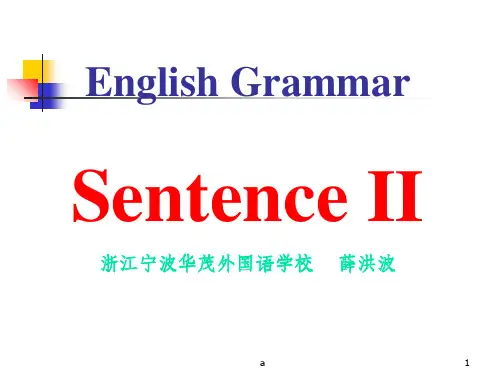
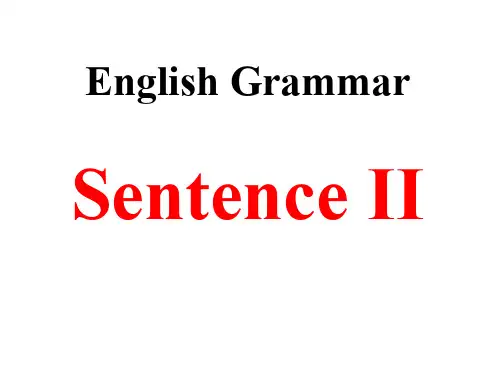
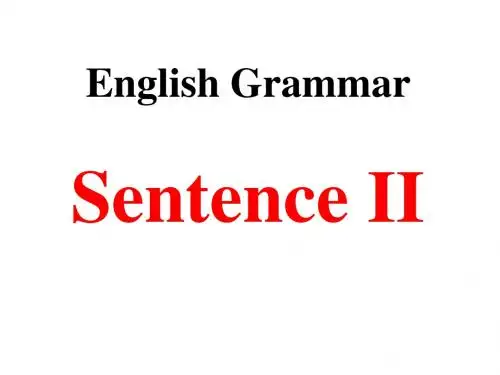
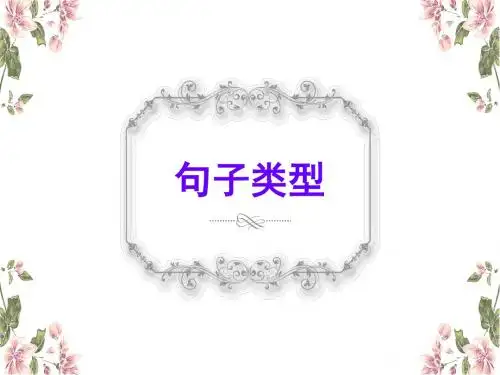
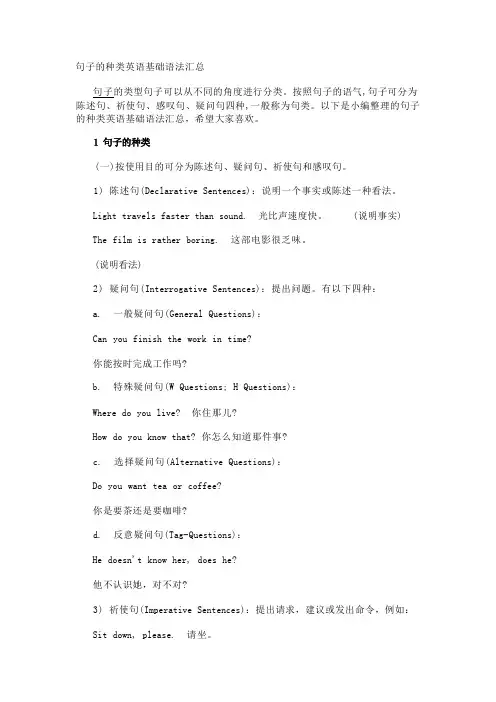
句子的种类英语基础语法汇总句子的类型句子可以从不同的角度进行分类。
按照句子的语气,句子可分为陈述句、祈使句、感叹句、疑问句四种,一般称为句类。
以下是小编整理的句子的种类英语基础语法汇总,希望大家喜欢。
(一)按使用目的可分为陈述句、疑问句、祈使句和感叹句。
1) 陈述句(Declarative Sentences):说明一个事实或陈述一种看法。
Light travels faster than sound. 光比声速度快。
(说明事实)The film is rather boring. 这部电影很乏味。
(说明看法)2) 疑问句(Interrogative Sentences):提出问题。
有以下四种:a. 一般疑问句(General Questions):Can you finish the work in time?你能按时完成工作吗?b. 特殊疑问句(W Questions; H Questions):Where do you live? 你住那儿?How do you know that? 你怎么知道那件事?c. 选择疑问句(Alternative Questions):Do you want tea or coffee?你是要茶还是要咖啡?d. 反意疑问句(Tag-Questions):He doesn't know her, does he?他不认识她,对不对?3) 祈使句(Imperative Sentences):提出请求,建议或发出命令,例如:Sit down, please. 请坐。
Don't be nervous! 别紧张!4) 感叹句(Exclamatory Sentences):表示说话人惊奇、喜悦、愤怒等情绪,例如:What good news it is! 多好的消息啊!(二)句子按其结构可以分为以下三类:1) 简单句(Simple Sentences):只包含一个主谓结构句子叫简单句,例如:She is fond of collecting stamps. 她喜欢集邮。
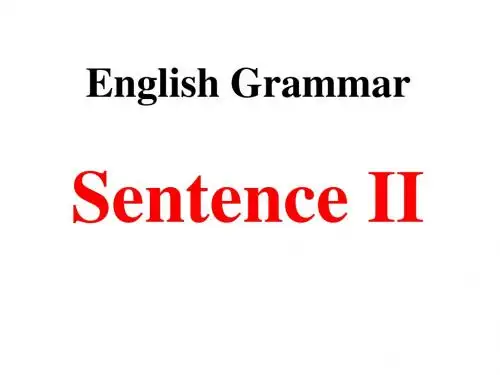
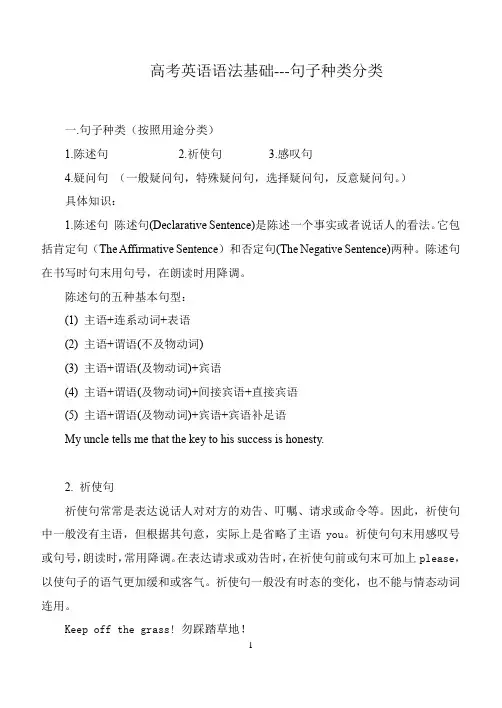
高考英语语法基础---句子种类分类一.句子种类(按照用途分类)1.陈述句2.祈使句3.感叹句4.疑问句(一般疑问句,特殊疑问句,选择疑问句,反意疑问句。
)具体知识:1.陈述句陈述句(Declarative Sentence)是陈述一个事实或者说话人的看法。
它包括肯定句(The Affirmative Sentence)和否定句(The Negative Sentence)两种。
陈述句在书写时句末用句号,在朗读时用降调。
陈述句的五种基本句型:(1) 主语+连系动词+表语(2) 主语+谓语(不及物动词)(3) 主语+谓语(及物动词)+宾语(4) 主语+谓语(及物动词)+间接宾语+直接宾语(5) 主语+谓语(及物动词)+宾语+宾语补足语My uncle tells me that the key to his success is honesty.2. 祈使句祈使句常常是表达说话人对对方的劝告、叮嘱、请求或命令等。
因此,祈使句中一般没有主语,但根据其句意,实际上是省略了主语you。
祈使句句末用感叹号或句号,朗读时,常用降调。
在表达请求或劝告时,在祈使句前或句末可加上please,以使句子的语气更加缓和或客气。
祈使句一般没有时态的变化,也不能与情态动词连用。
Keep off the grass! 勿踩踏草地!Always keep in mind that your main task is to get this company running smoothly.3. 感叹句感叹句的基本构成形式1).What(+a/an)+形容词+名词+主语+谓语!2).How+形容词+a/an+可数名词单数+主语+谓语!3).How+形容词/副词+主语+谓语!You can't imagine how crucial a role the pigeons played in the battlefields.你无法想象在过去的战场山鸽子发挥了多么重要的作用。
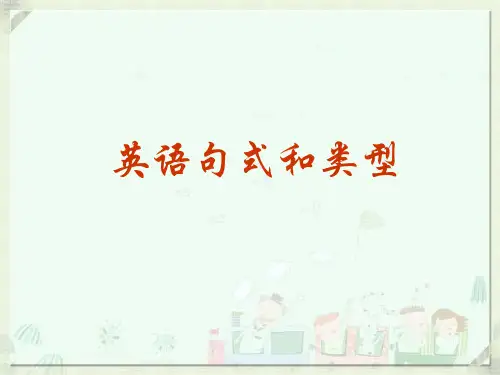
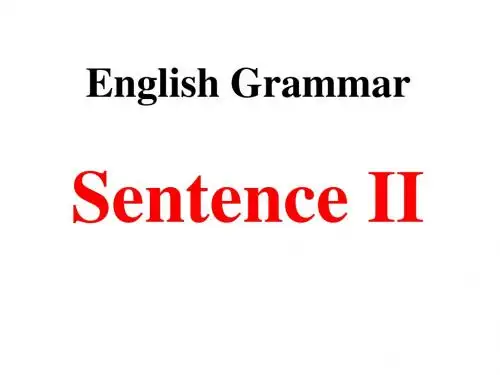
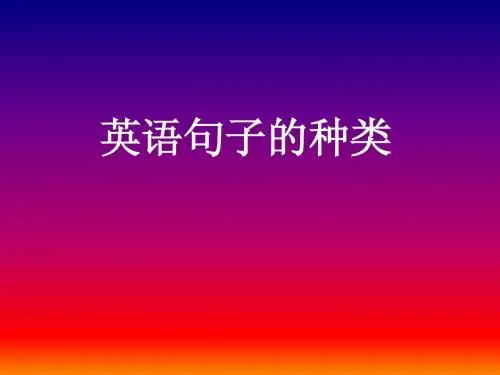
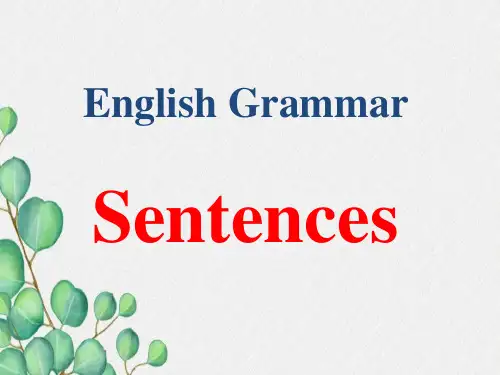
英语语法句子的种类一、陈述句陈述句是最常见的句子类型,用于陈述事实、描述情况或表达观点。
例句:- I go to school every day.- She is a doctor.- They live in New York.二、疑问句疑问句用于询问信息、寻求答案或确认事实。
例句:- Do you like pizza?- Where is the nearest post office?- Did you see the movie?三、祈使句祈使句用于表达请求、命令、建议或劝告。
例句:- Please close the door.- Don't forget to bring your umbrella.- Let's go for a walk.四、感叹句感叹句用于表达惊讶、赞美、失望或其他强烈的情感。
例句:- What a beautiful sunset!- How delicious the food is!- I can't believe we won the game!五、条件句条件句用于表达条件和结果之间的关系。
例句:- If it rains, we will stay indoors.- Unless you study hard, you will fail the exam.六、比较句比较句用于表示两个或多个事物之间的比较。
例句:- John is taller than Peter.- She sings better than him.- I prefer coffee to tea.七、否定句否定句用于否定陈述句中的内容。
例句:- I didn't see him at the party.- She doesn't like spicy food.- They haven't visited that museum before.。
英语语法句子种类与类型
英语语法中的句子种类主要有以下几种:
1. 陈述句(declarative sentence):用于陈述一个事实、观点、
情况等,以陈述句调子末尾的句点表示。
例:She is studying English.
2. 疑问句(interrogative sentence):用于提出问题,以问号结尾。
例:Is she studying English?
3. 命令句(imperative sentence):用于表达命令或请求,常以动
词原形开头。
例:Please study for your test.
4. 感叹句(exclamatory sentence):用于表达强烈的感情或感叹,以感叹号结尾。
例:What a beautiful sunset!
此外,还有一些特殊类型的句子,如:
1. 条件句(conditional sentence):用于表达假设、条件等情况,包括主从句结构。
例:If it rains, we will stay at home.
例:I like to read books, and my brother likes to watch movies.
3. 从句(subordinate clause):作为主句的一部分,常用连接词引导,包括定语从句、名词性从句和状语从句等。
例:The book that I bought yesterday is very interesting.。
英语句子种类与类型I、句子种类(按交际用途分)陈述句、疑问句、祈使句、感叹句、THERE-BE存在句II、句子类型(按句子结构分)简单句、并列句、复合句、并列复合句I、句子种类(按交际用途分)陈述句、疑问句、祈使句、感叹句、THERE-BE存在句1、陈述句说明一个事实或陈述一个看法,有肯定式和否定式,语序是主语在前,位于在后。
She arrived early. She cannot have arrived now.注:1)半否定句 I hardly know anything about it.2)部分否定句与全否定句I don’t like both the films.I like neither Cathy nor Mary.3)否定转移I don’t think it will be very cold today.(believe, expect, suppose,imagine)2、疑问句有一般疑问句、特殊疑问句、选择疑问句、反义疑问句。
1)一般疑问句用来询问一件事,答案通常是yes或no,注意语序。
Have you anything to say? Did someone phone me last night?Can’t you understand it? Isn’t it a beautiful lake?---Haven’t you been to the UK?---No, I haven’t.2)特殊疑问句疑问词有who,whose,what,which,where,when,why,how等。
(1)陈述语序Who was the first man in space?(2)倒装语序Who are you talking about?注:A、简略式Why not go alone? Why get so angry?How/What about taking a rest?B、复杂特殊疑问句What do you think he has done?3)选择疑问句(1)以一般疑问句为基础Is he a teacher or a doctor or a policeman?Shall I help you or can you manage?(2)以特殊疑问句为基础Which do you prefer, red wine or white?How shall we go there? By bus or by train?4)反义疑问句问:+,-?或-,+?答:+,+. 或-,-.1.Tom hardly knows French, ______ ______?2.—Mary didn't fail her exam, did she? ---______, she didn‘t.3.You needn’t come, ______ you?You need to come, ______ you?4.He had a big time there, ______ he? He had a car, ______ he?We hardly have to get up early, ______ we? 5.He used to live in Leeds, ______ he?3、祈使句表达命令、要求、请求、劝告等,用原形。
1)带第二人称的祈使句Be quiet, please. Don’t make any noise!You call a taxi. Don’t you forget it.(强调)Give me a hand, will/won’t/would/wouldn’ you?2)带第一、三人称的祈使句Let me try again. Let’s go. Let us go.Let’s not say anything about it./Don’t let’s say…Let him be here by 10 o’clock.注意:1、加强语气Do be careful of my broken leg.Do let me have another try.2 、祈使句的省略式A:Shall I open the window? B:Yes, please do./ No, please don’t.A:Shall we watch the game? B:Yes, let’s.4、感叹句由what 或how引导的,表示惊奇、愤怒、赞赏、喜悦等。
What a cute baby it is! What fine weather we have today!What a good time we had last night! How foolish she is!How clearly you speak! How clever a boy he is!What a dirty room, ______ ______?What interesting films, ______ ______?5、THERE-BE存在句There is a clock on the table. Once there lived a king called Lear.There goes the bell! Here come the bus. Here he comes.There used to be a village at the foot of the mountain.There is certain to be a heavy rain tonight.There seems to be some misunderstanding.There is a baby crying in the next door.There being no bus, we had to walk home.简单句、并列句、复合句、并列复合句1、简单句只包含一个主谓结构,个个成分都是单词或短语的句子。
All roads lead to Rome.He got up, dressed quickly, washed himself and went out.Is he a superman? Don’t be shy. Have a try.The man dressed in black seems to be a spy.2、并列句包含两个或更多互不依从的主谓结构,分句由并列连词and,then,but,or,or else,so,for,while,when;both…and,either…or,neither…nor,not only…,but also,as well as 等来连接。
He is a basketball fan, and his wife is a volleyball fan.Honey is sweet, but the bee stings.Don’t be late, for there is a meet ing.3、复合句复合句的某个成分,如主语、宾语、表语、同位语、定语、状语等,由另一个句子承当。
Hurry up, or you’ll be late.He works hard while his brother is a lazy bone.He was enjoying his KFC when a friend came.(1)名词性从句主语从句、宾语从句、表语从句和同位语从句统称为名词性从句。
宾语从句注意事项:引导词、语序、时态呼应、语态。
主语/表语/同位从句注意事项:引导词、语序、语态。
注意:1、whether与if的区别;2、陈述句变来的名词性从句由什么引导。
那么,一般疑问句、特殊疑问句、选择疑问句、感叹句变来的呢?3、复合句(2)定语从句=先行词+引导词+其它。
引导词的选用取决于:1)先行词;2)先行词的修饰语;3)引导词在定语从句中的成分。
注意:定语从句中的主谓一致;1、时间(after,before,as,when,while,since,till,until,whenever,as long as,as soon as;the moment,every time,next time;no sooner…than,hardly…when );2、地点(where,wherever);3、方式(as,as if,as though);4、程度(as…as, more than,so…that,such…that);3、复合句(3)状语从句即用作状语的分句,可作下列状语:1、时间(after,before,as,when,while,since,till,until,whenever,as long as,as soon as;the moment,every time,next time;no sooner…than,hardly…when );2、地点(where,wherever);3、方式(as,as if,as though);4、程度(as…as, more than,so…that,such…that);6、结果(,so that,so…that,such…that);7、目的(so that,in order that,in case);8、条件(if,unless);9、让步(though,although,even if,even though,in spite of the fact that ,whenever,wherever,whoever,whichever,However,no matter how,whether)。
3、复合句并列复合句即并列连词连接了带从句的并列句。
English is widely used in the world, but China has the largest number of people who speak Chinese.。